
หน้าหลัก | สุขภาพดี | สุภาพสตรี | การแปลผลเลือด | โรคต่างๆ | วัคซีน | อาหารเพื่อสุขภาพ
Berries ผลไม้คู่บ้านเพื่อป้องกันโรค
Berries เป็นผลไม้ขนาดเล็กมีสีต่างกันตั้งแต่สีร้ำเงิน แดง และสีม่วง มีรสชาดทั้งหวานและเปรี้ยว สามารถนำมารับประทานสดๆหรือทำเป็นแยม หรือของหว่านอื่น ส่วนประกอบที่สำคัญของ Berries ได้แก่ ใยอาหาร วิตามินซี สารต้านอนุมูลอิสระ polyphenols.ดังนั้นผลไม้กลุ่มนี้จึงมีประโยชน์ป้องกันและลดการเกิดโรคเรื้อรัง
1. Blueberries
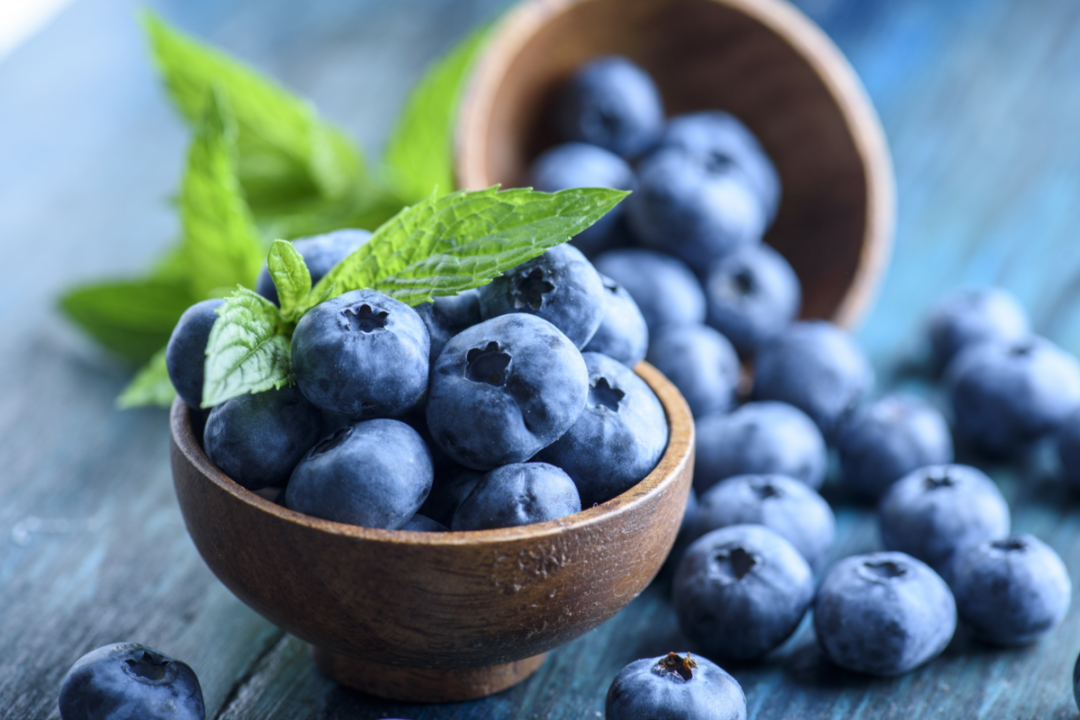
Blueberries เป็นผลไม้ที่นิยมทาน มีวิตามิน เคสูงมาก
Blueberriesหนึ่งถ้วย (148 grams)จะมีสารอาหารดังต่อไปนี้
Blueberries มีสารต้านอนุมูลอิสระชื่อว่า anthocyanins ซึ่งจะลดความเสี่ยงของการเกิดโรคหัวใจโดยกลไก
2. Raspberries
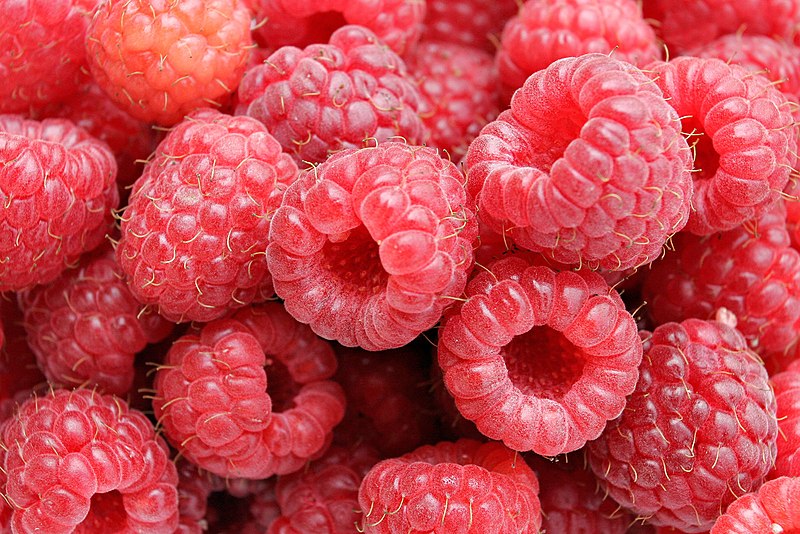
Raspberries เป็นผลไม้ที่ใช้ทำของหวาน และเป็นแหล่งที่มีใยอาหารเป็นจำนวนมาก
Raspberries หนึ่งถ้วย (123 grams)จะมีสารอาหาร
Raspberries มีสารต้านอนุมูลอิสระที่เรียกว่า ellagitannins จะลดปัจจัยเสี่ยงในการเกิดโรคหัวใจ โดยลดความดันโลหิต ลดไขมันในเลือด และลดการอักเสบ
3. Goji berries
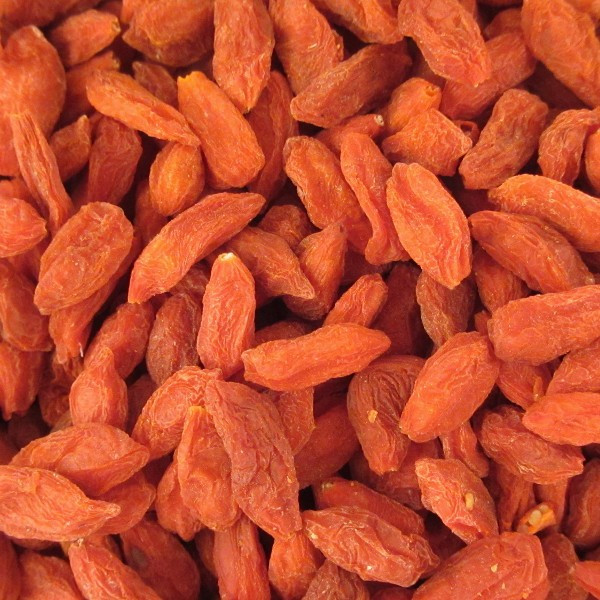
Goji berries หรือเกาคี้เป็นสมุนไพรของจีนแต่ได้รับความนิยมในประเทศตะวันตก เกาคี้ขนาด (28 grams) จะมีสารอาหาร
Goji berries also contain high levels of vitamin A and zeaxanthin, both of which are important for eye health.
One study of 150 older adults found that eating 14 grams of a proprietary milk-based formulation of goji berry each day reduced age-related decline in eye health. This study, along with a second similar study, suggested that eating goji berries could raise blood zeaxanthin levels (21Trusted Source , 22Trusted Source ).
Like many other berries, goji berries contain antioxidant polyphenols. One study found that drinking goji berry juice for 30 days increased blood antioxidant levels of healthy older Chinese adults (23Trusted Source ).
Another study found that drinking goji berry juice for 2 weeks increased metabolism and reduced waist size in people with overweight (24Trusted Source ).
While these studies are promising, they’re relatively small. So, more research is needed.
SUMMARYGoji berries are particularly rich in nutrients that contribute to eye health. They also contain
important antioxidants.

Strawberries are one of the most commonly consumed berries in the world and also one of the best sources of vitamin C.
One cup (144 grams) of whole strawberries provides (25Trusted Source ):
Strawberries are good for heart health. In fact, a study of more than 93,000 women found that those who ate more than 3 servings of strawberries and blueberries per week had over a 30% lower risk of heart attack (26Trusted Source ).
Other studies have shown that strawberries may reduce a number of risk factors for heart disease, including blood cholesterol, triglycerides, and oxidative stress (27Trusted Source , 28Trusted Source , 29Trusted Source , 30Trusted Source ).
Strawberries can also reduce inflammation by lowering inflammatory chemicals in the blood, such as IL-1β, IL-6, and C-reactive protein (CRP) (31Trusted Source , 32Trusted Source , 33Trusted Source ).
Moreover, strawberries may help control blood sugar levels, which is important for preventing diabetes (33Trusted Source ).
In fact, a small study found that when people with overweight consumed strawberries with a high carbohydrate, moderate fat meal, they saw a reduction in insulin response (34Trusted Source ).
Finally, another study showed that eating 2 ounces (60 grams) per day of freeze-dried strawberry powder reduced oxidative stress and inflammatory chemicals in people at risk of developing esophageal cancer (35Trusted Source ).
SUMMARYStrawberries are an excellent source of vitamin C. They may also help reduce risk factors for heart
disease and control blood sugar.
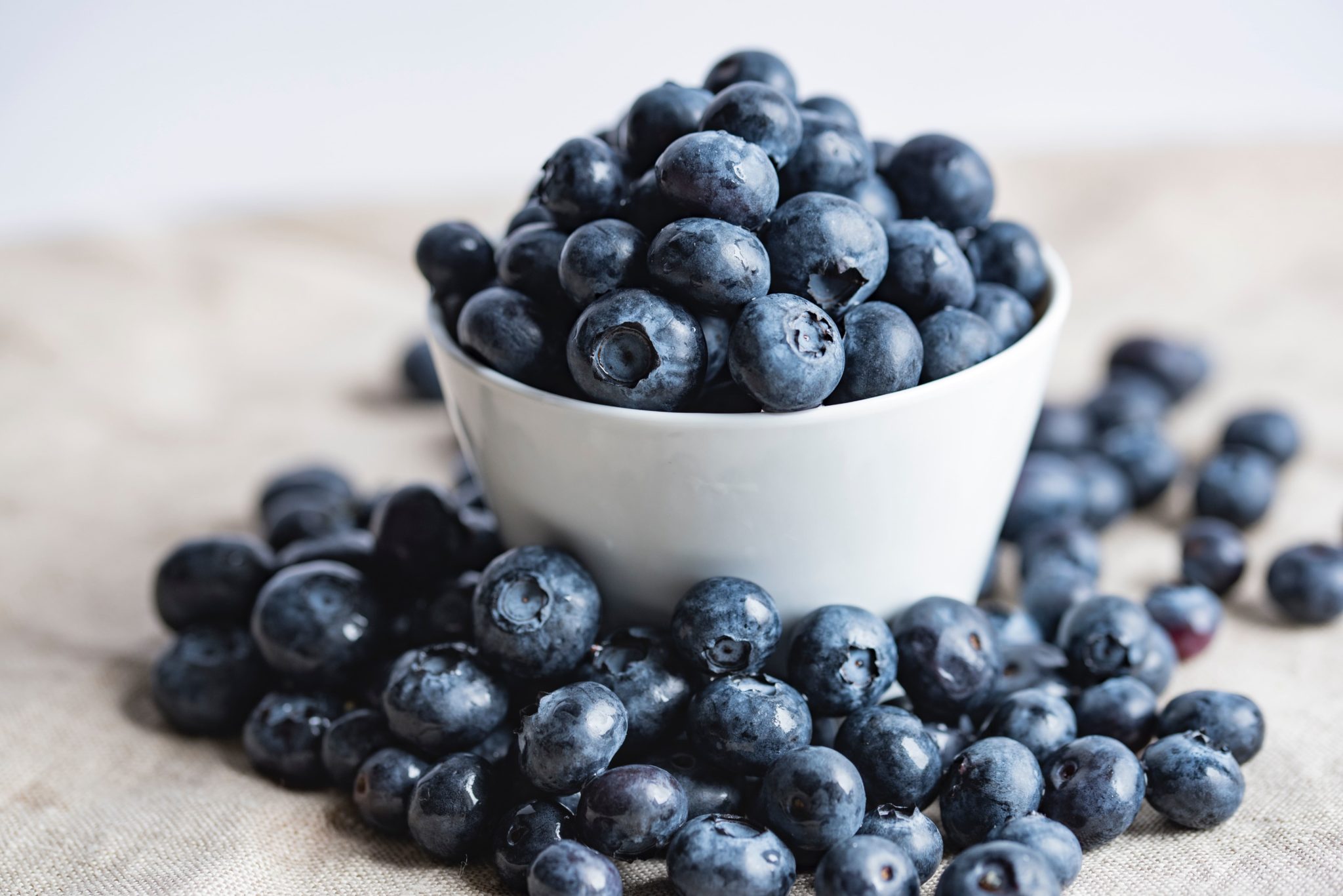
Bilberries are very similar to blueberries, so the two are often confused. Bilberries are native to Europe, whereas blueberries are native to North America.
One 3.5-ounce (100-gram) serving of bilberries provide (36):
Scientific studies have suggested that bilberries are effective at reducing inflammation.
Some have suggested that eating bilberries or drinking bilberry juice can reduce inflammation in people at risk of heart disease or metabolic syndrome (37Trusted Source , 38).
Another study of 110 women found that eating bilberries for around 1 month reduced the levels of endothelial markers that are connected with the development of heart disease. Bilberries were also associated with a reduced waist circumference by 0.5 inches (1.2 cm) and weight by 0.4 pounds (0.2 kg) (39Trusted Source ).
A separate study found that eating a diet rich in bilberries, whole grains, and fish reduced blood sugar in people with high blood sugar (40Trusted Source ).
Bilberries may also increase HDL cholesterol and reduce LDL (bad) cholesterol (41Trusted Source , 42).
SUMMARYBilberries are similar to blueberries and are effective at reducing inflammation. They may also help
reduce weight and blood cholesterol.
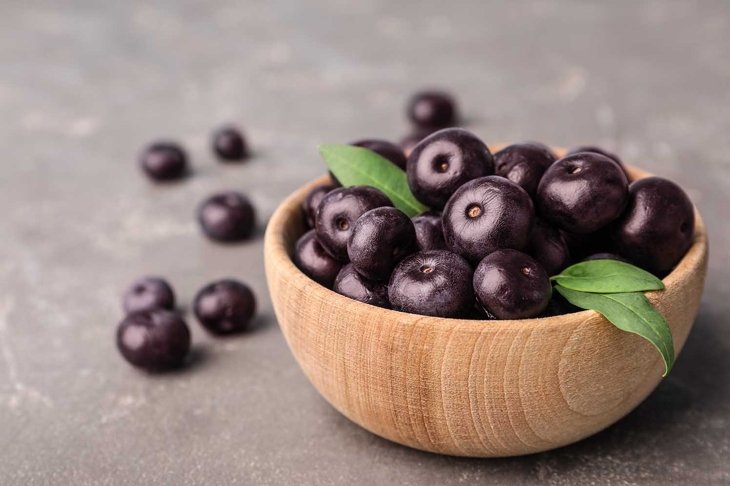
Açaí berries grow on açaíi palm trees native to the Brazilian Amazon region. They have become popular health food supplements because of their high antioxidant content.
One 3.5-ounce (100-gram) serving of açaí berry puree provides (43Trusted Source ):
Keep in mind that açaí berries are often consumed dried or freeze-dried, which can affect their nutritional content.
Açaí berries are one of the best sources of antioxidant polyphenols and may contain as much as 10 times more antioxidants than blueberries (44Trusted Source ).
When consumed as a juice or pulp, açaí berries can increase blood antioxidant levels and reduce chemicals involved in oxidative stress (45Trusted Source , 46Trusted Source ).
Additionally, açaí berry pulp has been shown to reduce blood sugar, insulin, and blood cholesterol levels in adults with overweight who consumed 200 grams per day for 1 month (47Trusted Source ).
These effects have also been observed in athletes. In one study, drinking 3 ounces (100 ml) of an açaí juice blend for 6 weeks reduced blood cholesterol and oxidative stress after exercise, which may speed up recovery from muscle damage (48Trusted Source ).
The antioxidants in açaí may also help reduce the symptoms of osteoarthritis. A study of people with osteoarthritis found that drinking 4 ounces (120 ml) of açaí juice per day for 12 weeks significantly reduced pain and improved daily living (49Trusted Source ).
SUMMARYAçaí berries contain high amounts of antioxidants, which may help reduce blood cholesterol,
oxidative stress, and even the symptoms of osteoarthritis.
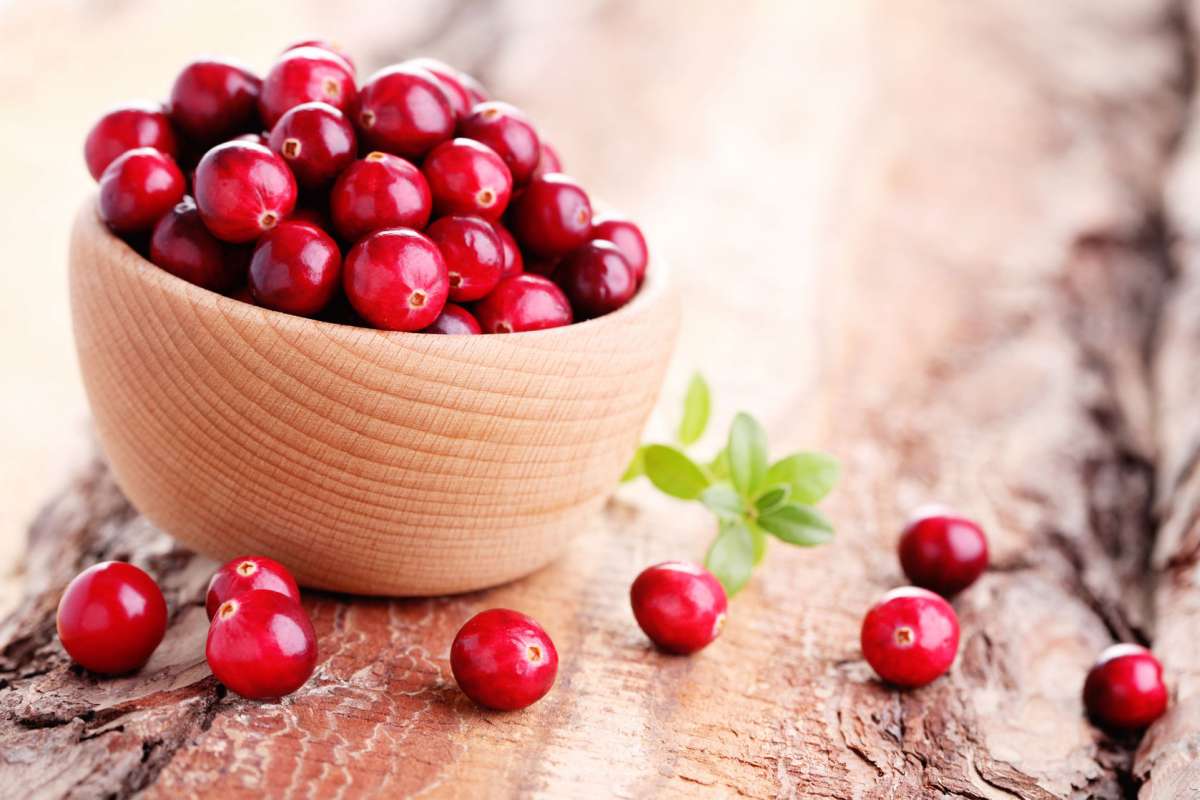
Cranberries are an extremely healthy fruit with a tart taste. That’s why they’re rarely eaten raw. Instead, they are commonly consumed as juice or as cranberry sauce.
One cup (110 grams) of raw cranberries provides (50Trusted Source ):
Like other berries, cranberries contain antioxidant polyphenols.
However, they’re primarily consumed as a beverage, and most of these antioxidants are lost in the process of turning them into a juice. So, cranberry juice doesn’t contain as many polyphenols as raw cranberries (51Trusted Source ).
The best known health benefit of cranberries is their ability to help reduce the risk of urinary tract infections (UTIs).
Certain properties in cranberries prevent the bacteria E. coli from sticking to the wall of the bladder or urinary tract, reducing the risk of infection (51Trusted Source , 52Trusted Source , 53Trusted Source ).
A number of studies have shown that drinking cranberry juice or taking cranberry supplements can reduce the risk of UTIs (54Trusted Source , 55Trusted Source , 56, 57Trusted Source ).
Cranberry juice may reduce the risk of other infections as well.
H. pylori is a type of bacteria that can cause stomach ulcers and gastric cancer. A number of studies have shown that cranberry juice can prevent H. pylori from attaching to the stomach wall, help prevent infections, and act as a complementary treatment with antibiotics (58Trusted Source , 59Trusted Source , 60Trusted Source ).
Cranberry juice has also shown various benefits for heart health. Many studies have found that drinking cranberry juice can reduce (61Trusted Source , 62Trusted Source , 63Trusted Source , 64Trusted Source ):
However, it’s best to avoid varieties of cranberry juice with lots of added sugar and instead choose ones labelled as 100% juice.
SUMMARYCranberries and cranberry juice can reduce the risk of urinary tract and stomach infections and
may benefit heart health. However, it’s best to avoid juices with lots of added sugar.
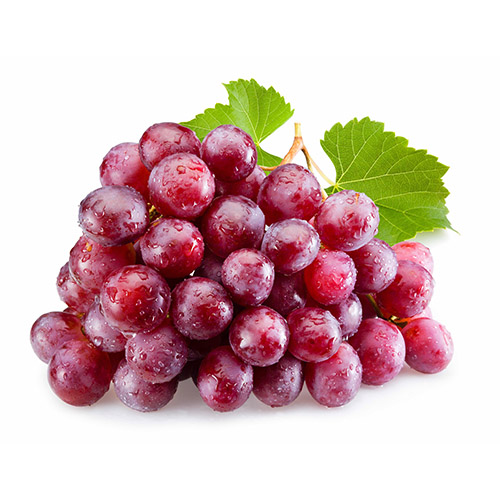
Grapes are widely consumed either as whole raw fruit or in the form of juice, wine, raisins, or vinegar.
One cup (151 grams) of whole raw grapes provides (65Trusted Source ):
The skin and seeds of grapes are an excellent source of antioxidant polyphenols. Studies have shown that grape seed polyphenol extracts can lower both blood pressure and heart rate (66,Trusted Source 67Trusted Source ).
However, many of these studies were small. And other studies assert that the effect of polyphenols on blood pressure remains unclear (68Trusted Source ).
A large observational study found that eating grapes or raisins 3 times per week was associated with a 12% reduction in the risk of type 2 diabetes (69Trusted Source ).
Another study found that eating 17 ounces (500 grams) of grapes per day for 8 weeks reduced blood cholesterol and oxidative stress in people with high cholesterol (70Trusted Source ).
Finally, grape juice may even benefit brain health. A small clinical trial of 25 women found that drinking 12 ounces (355 ml) of Concord grape juice every day for 12 weeks significantly improved memory and driving performance (71Trusted Source ).
SUMMARYGrapes, particularly the seeds and skin, are full of antioxidants. They may help reduce blood
cholesterol and type 2 diabetes risk while also benefiting brain health.
Berries are some of the healthiest foods you can eat. They’re low in calories and high in fiber, vitamin C, and antioxidants.
Many berries have been associated with being beneficial for heart health. These include lowering blood pressure and cholesterol, while reducing oxidative stress.
They may also help reduce the risk of type 2 diabetes and act as great alternatives to snacks with added sugar.
Try to eat a few portions of berries a week and sample different types. Add them to your salads or use them as a healthy breakfast topping.
